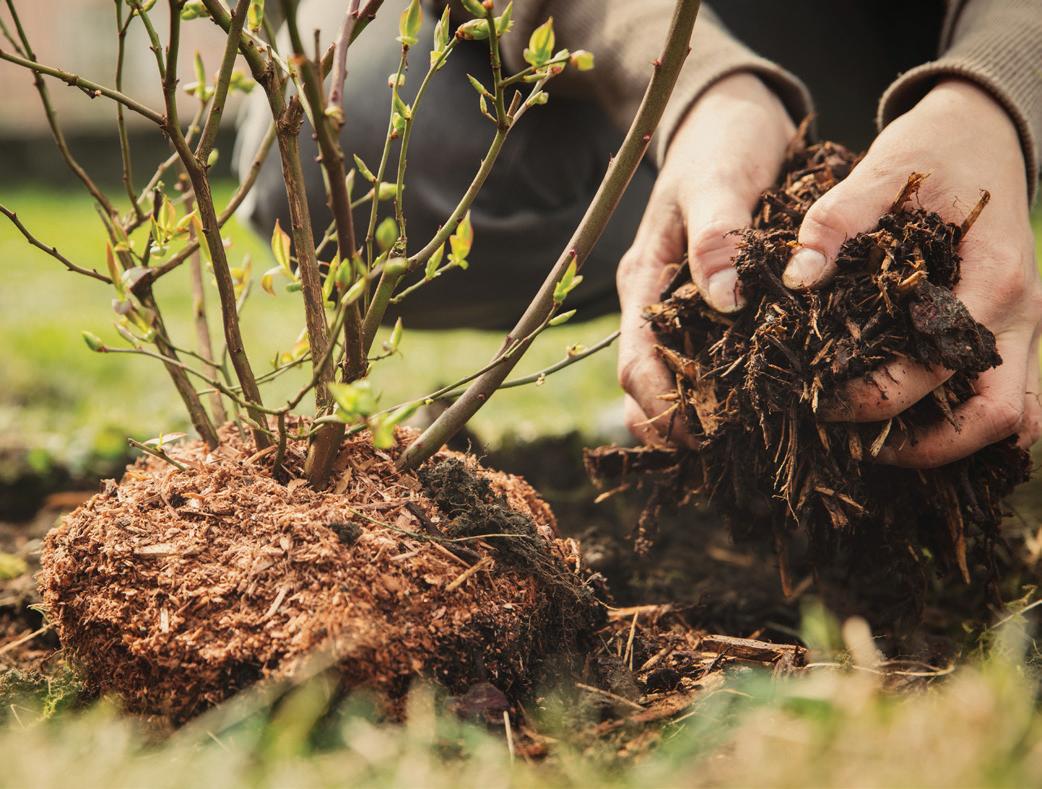
2 minute read
GROWING Blueberries
BY MARY SMITH
Plump, juicy blueberries aren’t just delicious. They’re high in nutrients, antioxidants, fiber and vitamins. Fortunately, for very little effort, blueberries are easy to grow—if you have the right soil conditions.
Advertisement
Identify The Best Blueberry Plants
When you grab a boost of blue, you’re most often eating high bush blueberries. However, the high bush blueberry classification covers a range of different blueberry varieties, each of which is unique in its season, size, shape, color and taste. Depending on the climate and ripening season in your area, certain varieties will grow better than others.
Select Your Blueberry Spot
Once you’ve found the right blueberry plant, you’ll also want to find a place it can thrive. Select a sunny location with well-worked, well-drained soil that is free of weeds. Avoid planting near trees, which block out sunlight and suck up the moisture in the soil. It’s best to grow blueberries in an area where water is readily available so you can keep their roots moist throughout the growing season. Raised beds or patio containers are good options for areas where the soil is not ideal.
Prep Your Soil
Soil preparation is crucial to the health of blueberry plants. Blueberries prefer acidic soil, and if the soil in your area is not acidic enough, you may need to make adjustments, with guidance from your local garden center or Cooperative Extension. Planning ahead is crucial – if changes in your soil’s pH levels are necessary, it’s best to make them a year before you plant your blueberries.
Space And Plant Your Blueberries
It’s time to get your plants in the ground! In most areas, it’s ideal to plant blueberries in the fall or spring. You can plant blueberry bushes as close as 2 or 2.5 feet apart to form solid hedgerows, or space them up to 6 feet apart so they grow individually. If you plant in rows, allow 8 to 10 feet between the rows.
Fertilize Your Blueberry Plants
Blueberries are part of a plant family that includes the flowering azalea, mountain laurel and heather-plants. You can ask your local garden center for fertilizer recommendations, but once established, blueberry plants typically respond well to acid fertilizers such as azalea or rhododendron formulations. Follow the instructions on the label carefully – blueberries are sensitive to over fertilization! You’ll want to apply fertilizer one month after planting, not at the time of planting. For best results, fertilize your plants once in early spring and again in late spring, always watering thoroughly afterward.
Mulch Your Blueberry Plants
Blueberries do best with 2-4 inches of mulch over the roots to conserve moisture, prevent weeds and add organic matter. Bark mulch, acid compost, sawdust and grass clippings all work well.
Blueberries should be planted either in fall by mid-October or in early spring after severe freeze danger has passed. When you receive your plants, check them to make sure that they look healthy and the roots are moist. For best results, planting should be done within a day or two of arrival.











